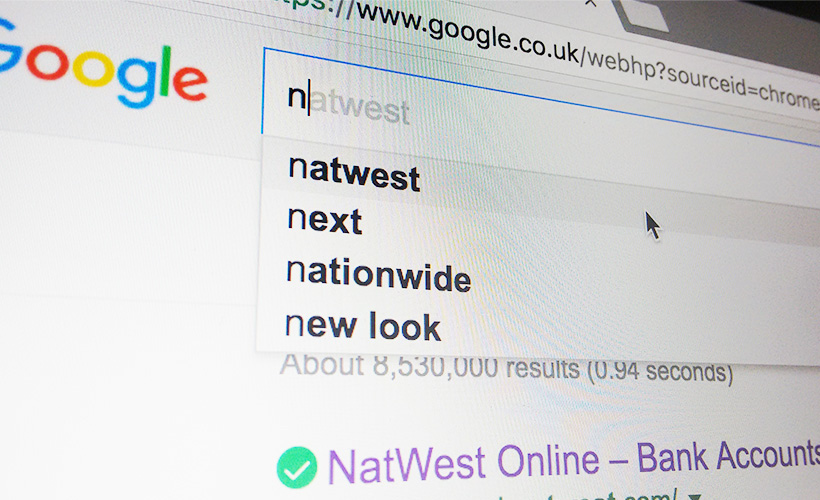SEO is as important as it has ever been, but goes beyond the usual meta tags and keywords. As Google continues to update its search algorithm, marketers need to factor in user intent and queries to help improve rankings.
SEO wizards like us know all about the technical elements websites must have to improve their search engine rankings for beloved business-relevant keywords. Meta data, keywords, page speed (and more!) are all still critical.
But in the scramble to get the highest rankings possible, it’s easy to get distracted from a key challenge. As marketers, we must understand what users are searching for – as well as that exact keyword phrase! – and answer their need on the website page itself. Wil Reynolds perfectly summed up this idea as the ‘query before the query’ in his talk at Turing Festival this year.
While SEO is not just about influencing purchase, if you are selling a product or service, understanding users’ search intentions means your SEO efforts will tie more closely into their purchasing decisions. The idea appears simple enough. But how do some brands achieve this deeper connection with customers than others?
Connected Search Queries
Wil Reynolds revealed the best way to consider and connect with your specific end users. Aim to recognise the root of their real query behind their search query, identify with it and develop ‘complete’ website content that answers all their concerns.
Here’s a quick example. If I needed financial advice, I may perform a quick Google search using “financial advice”, or go for something more specific, adding “student loans”, “mortgage”, “retirement”… the list goes on. There, I would see the usual ads and results.

This shows the initial search that could be conducted in Google.
If I removed these searches, and started performing another, writing just the letter “n” into my search bar… Google suggests I want to search for “NatWest”, as a popular bank, based upon my previous queries. This demonstrates how closely search queries link with each other, a bit like the classic board game Connect.

This now shows the second search input into Google. Showing how linked search queries are. After searching for financial advice in the initial search, Google now infers from the letter 'n' you may be looking for a bank.
Google RankBrain's Challenges
Google updates mean SEO marketers have already developed an irrational fear of pandas and penguins… and now we need to collaborate with Google RankBrain.
This is a machine-learning artificial intelligence (AI) system that has the ability to understand and identify new patterns in searches. Now, Google modifies search results based upon the information RankBrain has acquired from previous searches. Taking my earlier example relating to search queries, Google identified that I was trying to look for information about mortgages, student loans or financial advice and anticipated my next search with just the letter ‘n’ to suggest ‘NatWest’.
This could affect the keywords you want to target. Don’t worry, this isn’t the ‘rise of the machines’ – it just means we need to be smarter with our content. Revising keywords, engaging with consumers through different channels, and creating new, comprehensive content (with end users in mind!) are just a few things we can do to promote businesses, increase awareness and continue to rank well in relevant Google searches.
My 3 Optimisation Tips
Google’s search platform is Hummingbird, which was developed to focus more on the meaning behind words and show search results based on this.
But, while content is king… don’t lose sight of the other important ‘signals’ that contribute to your page’s rank. In my opinion, the big three are:
1. BACKLINKS
Consistently review your back links to remove any spam, which could compromise the relevance and validity of your website. A useful tool to use is the Moz Open Site Explorer which you can use to check your backlinks.

Our marvellous marketers understand the importance of analysing back-links for SEO.
Google have stated that this is one of the most important ranking factors. We spend so much time focusing on optimising our own website, it can be easy to forget about checking the authority of websites that link to our own. Google treats linking like a ‘vote of confidence’ in your content – so it’s important that reputable sites connect to your own.
2. PERFORMANCE
You may even want to invest in accelerated mobile pages (AMP), especially if you publish a lot of content. Read our blog about the benefits (and challenges!) of AMP for businesses here.
Pages built using AMP are marked with a lightning bolt. Appearing in Google’s Top Stories and search results, these pages load much faster for mobile users. Website performance is key, not just for search engine rankings but for improving the user experience as well. This means no broken links or images and using PageSpeed Insights to ensure your pages load faster than Usain Bolt in the 100m sprint!

Google is now showing AMP pages above others, content publishers must take note.
3. META DATA
Rewrite meta tags and alt tags as competitive keywords emerge and if you require different target keywords. Content is king, and we need to ensure we are producing the right content for our users by answering their queries. RankBrain is considered to be the third most important signal in searches. As the famous saying goes: “when in Rome, do as the Romans do”. Marketers must adopt Google’s own goal to understand the purpose of searches. Our content and keywords must reflect a comprehension of human language (rather than only using terms a machine will understand). As the previous section explored, we must answer the “query before the query” to keep up with Google’s artificial intelligence as it evolves.
Summary
The robots are getting smarter, there’s no doubt about it. The focus of SEO lies in understanding the entire customer journey. Artificial intelligence is forcing marketers once again out of their comfort zone. But, as humans we have an emotional intelligence that the robots can’t learn. We can use our ability to empathise with each other to help us understand our target audience and how they search.
To be a successful brand, we must connect emotionally with our consumers, building solid relationships based on understanding and trust. If we are able to channel our empathy towards users and truly understand the meaning behind their queries… then we’re well on our way to out-rank the competition. At Cyber-Duck, we love diving into SEO as a top tactic in our comprehensive marketing campaigns. Check out our latest case study – where we seized market share for IMI’s Professional Register – and get in touch if you’re searching for a partner!


